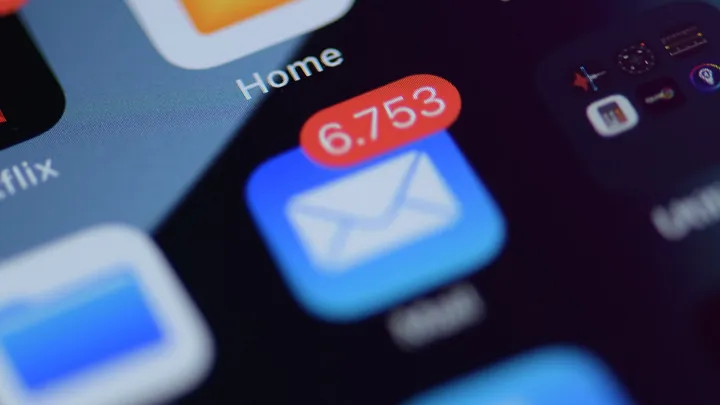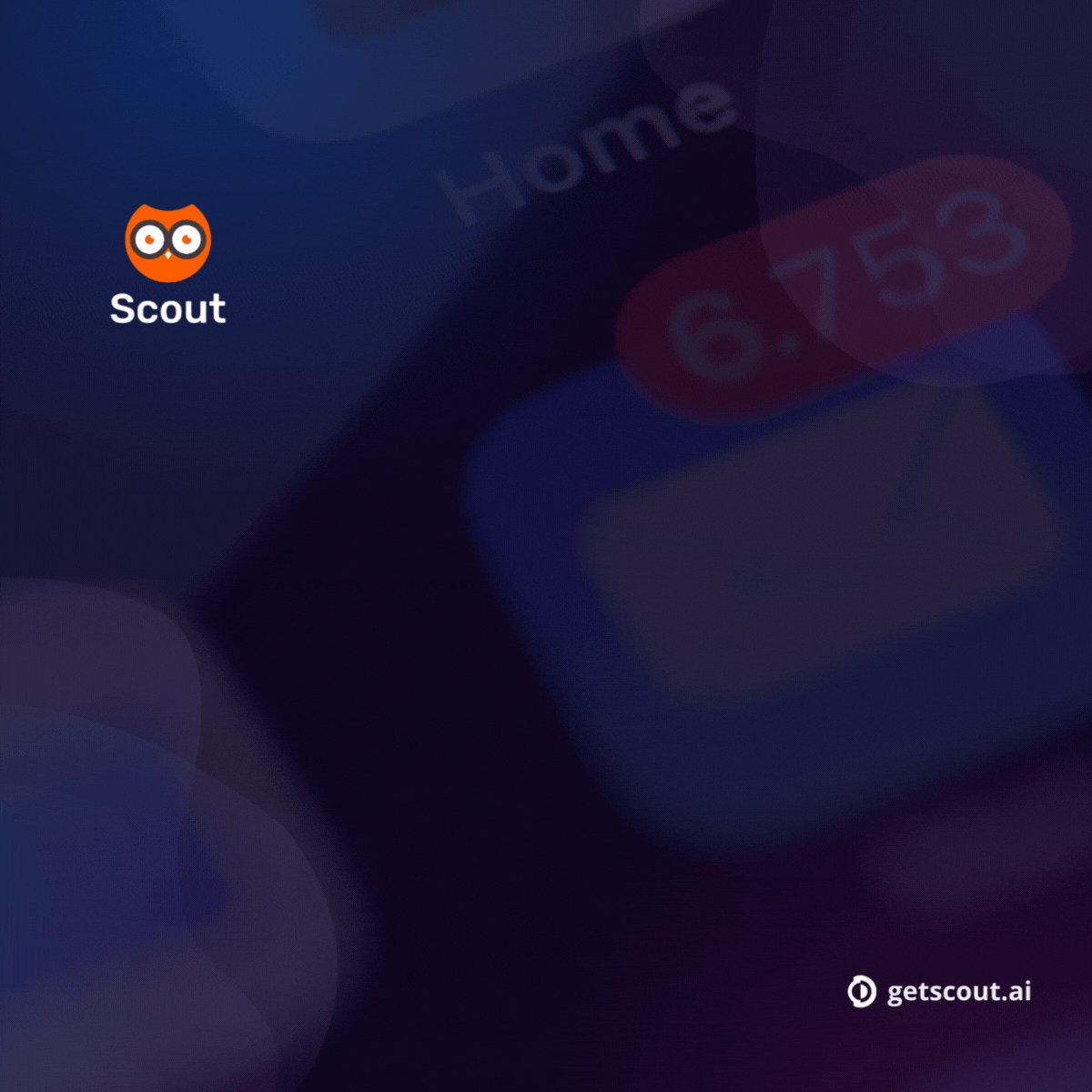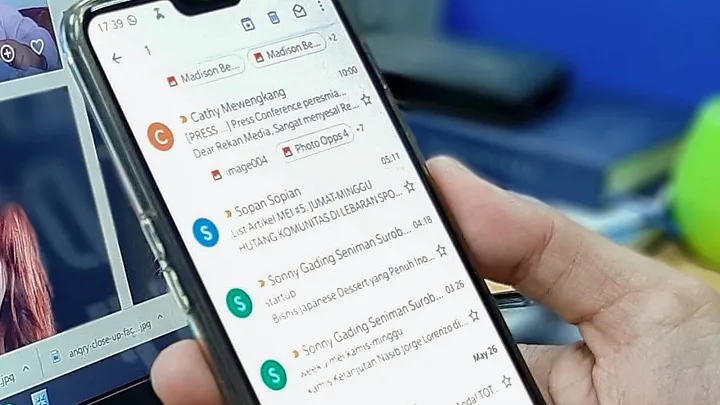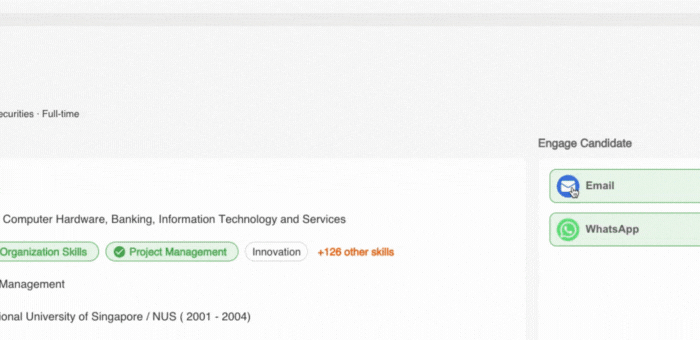When sourcing candidates for an open role, email is a common method of engaging talent as it gives recruiters and HR an opportunity to build relationships. Outreach is even more important in 2023 as latest reports show that at least 96% of workers are looking for a new role.
With a large base of passive candidates in the market, being able to use your cold outreach email to take a candidate — whom you have never engaged with — to an introductory call (and possibly leading to a future hire) is a necessary skill.

To recruit with cold emails is a big challenge. Your emails get ignored by candidates; other recruiters are vying for the same, top-quality candidates and reaching out to them through email as well; and your emails are struggling to stand out in the candidate’s inbox.
It might sometimes feel like your emails are being sent off into the void which can be especially deflating given how much time and effort was spent sourcing for the right candidates in the first place.
We’re going to show you how to craft the best cold outreach emails to candidates, and how you can use templates if you get stuck.

1. Personalisation
A poor way of reaching out to candidates is by copying and pasting the same emails that you would send to each candidate you come across, a common practice that is adopted by many recruiters. The “spray and pray” method of sending outreach emails usually does not work, and there is a chance that candidates can tell when an email has been copy-pasted to hundreds of other candidates. When the email fails to make candidates feel special or unique, it is no surprise why candidates would not respond.
Instead, take a more human approach and tailor your email to each candidate. At the end of the day, the point of the email is to make a connection on the first interaction. Taking a few minutes to write something specific about their profile, their work experience, skills, or even anything not work-related will help you stand out from the other recruiters.
2. K.I.S.S (Keep It Short and Simple)
Longer emails do not result in higher response rates. In fact, the shorter the email, the better, with 75–100 word emails boasting the highest response rates.
People are pressed for time and are unlikely to read your email if they open it to find a wall of text. As tempting as it may be, avoid trying to pack the email with too much information.
Keeping the outreach email short, clear, and making sure there is enough white space makes it easier for candidates to focus and skim through your message quickly, increasing your chances of getting a response.
3. Good Subject Lines
The subject line is almost always the first thing someone sees in an email. Top subject lines have a good hook that entices that person to open it.

It also helps to personalise the subject line by adding their name to it, helping the email stand out even more, while making them feel valued.
Another way to catch their attention is to make use of one emoji, at most.
The important thing to note is to make the subject line specific and relevant to the candidate, rather than vague, cryptic and impersonal.
Here is an example of an eye-catching subject line that will hook your candidates in:
[Alice], Are You Looking For a New Job?
[Jane], Here’s a New Job That’s Perfect for You
[John], Explore New Opportunities with [Company Name]!
[James], [Company Name] is Highly Impressed by Your Resume.
[Greg], Your Dream Job is Here.
Once you have gotten these principles down, you can even try A/B testing with different subject lines to determine which garners the most opens.
4. Emphasising Scarcity
A common mistake recruiters commit when writing outreach emails is that they can appear desperate for a response, especially when they have been spending weeks and months trying to fill a role that has been left unfilled.
A good way of writing emails is to create a sense of scarcity, or fear-of-missing-out (FOMO), in the reader, to make it seem as if they are missing out on a great opportunity.
Use numbers to help push your message. We’ve all seen sales posts touting 40–50% discounts. Your email will need to trigger a similar emotion for the reader to take action. Just be sure to not be extremely pushy, and instead drop subtle hints on what the candidate is missing out on.
5. Employee Value Proposition — What’s in It for Them
Rather than rattle off on the experience and skill requirements of the job, think about Employee Value Proposition (EVP), which is the unique benefits that an employee gains in return for their experience and skills.

What is unique and appealing about this opportunity that you are presenting to the candidate? For example, how does it help the person’s career? It’s in human nature to look out for oneself, and mixing your emails with both job information as well as clear benefits will improve the chances of a reply.
6. Call to Action
After spending much time and effort into crafting the best, most optimised email for your candidate, remember to include a clear call-to-action at the end of your email.
A call-to-action (CTA) is a prompt included within the email to nudge your reader to take a desired action. As a recruiter, you should be clear on what you want your candidate to do after reading the email. Do you want to ask the candidate if they would like to learn more about the opportunity? Do you want the candidate to send their updated CV to you? Or are you looking to set up an introduction call?
Figure out the objective of your outreach email, and then be sure to include a CTA in each one you send out.
7. Make Full Use of Your Signature
Beyond signing off with a “Regards, [Your Name]”, you can add even more value to your email signature. A signature is akin to your personal or corporate brand, and can show that you are professional and here for business.
You can post your contact number, email address, and a link to your LinkedIn profile to make it easier for candidates to contact you in the future.
Additionally, you can also include certain accolades that raise brand perception, such as recent achievements, awards and future event details. Readers will feel more motivated to reply once they see you or your company possess a certain level of credibility.
8. Structure Your Content With the A.I.D.A Framework
A simple and effective way to structure your email is by using the A.I.D.A framework, which stands for Awareness, Interest, Desire and Action. This framework serves as a good overview of earlier tips and can be applied to any industry or purpose. If there’s only thing you remember, it’s the A.I.D.A framework.

Awareness: Catching the reader’s attention with an interesting and relevant subject line.
Interest: Building up the reader’s interest after grabbing their attention with facts or social proof that supports your opening line.
Desire: Evoking desire in your reader by sharing the benefits (the Employee Value Proposition) that the new opportunity provides.
Action: Offering the reader a clear call-to-action based on the objective of your email.
9. Use Prewritten and Proven High-Engagement Template Emails with Scout
At the end of the day, it still take time and a considerable amount of brain juice to write an exemplary email, especially when there is a long talent list.
However, you can gain both quality AND quantity with Scout’s automated and personalised outreach emails. Scout is an AI-powered candidate sourcing tool that helps you source and engage your best talent within minutes.
By the way, this also integrates with your own email client (like Microsoft Outlook), allowing you to receive and respond to emails directly.

You can even take a step further by ditching email completely and outreach through WhatsApp. WhatsApp messages see an 98% open rate and are read within the first two hours, a rate that is five times more than emails and SMS.
Because of WhatsApp’s video and audio calling features, you can seamlessly move from an introductory message to a call right within the app.
Scout lets you choose between email or WhatsApp, so you have the best of both worlds. Try it out for free with a FREE 14-day trial today.
Conclusion
The next time you begin writing candidate outreach emails, remember these best practices to increase your emails’ open and response rates.
When in doubt, keep your emails short, concise, relevant and personalised for the best results (the A.I.D.A. framework).
If you want to scale your recruitment outreach even further, leverage on Scout’s AI technology to bump up not just the quality of content, but also to incorporate automation that will save you bucketloads of time.
